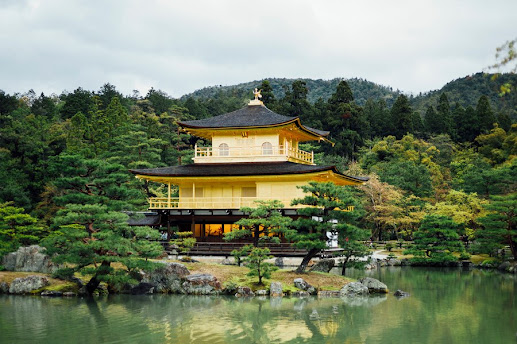Exploring Kenya: A Journey into the Heart of East Africa
Kenya, a land of unparalleled natural beauty and cultural richness, beckons travelers from around the globe with its diverse landscapes, vibrant wildlife, and deep-rooted traditions. Located in East Africa, Kenya is renowned for its stunning national parks, including the iconic Masai Mara, which offers some of the world's most spectacular wildlife encounters. In this blog, we delve deep into the wonders of Kenya, highlighting its attractions, culture, and the allure of Masai Mara packages.
Introduction to Kenya
Nestled on the eastern coast of Africa, Kenya boasts a diverse tapestry of landscapes that range from pristine beaches along the Indian Ocean to expansive savannahs teeming with wildlife. Its geographical diversity supports a remarkable array of ecosystems, making it a hotspot for ecotourism and wildlife enthusiasts alike.
Discovering Kenya’s Natural Wonders
1. The Masai Mara: A Wildlife Paradise
The Masai Mara National Reserve stands as Kenya's crown jewel, offering an unparalleled safari experience. Spanning over 1,500 square kilometers, this vast expanse of savannah grasslands is home to an astonishing variety of wildlife. From the Big Five (lion, elephant, buffalo, leopard, and rhinoceros) to numerous other species like giraffes, zebras, and wildebeests, the Masai Mara promises unforgettable encounters with nature at its most raw and majestic.
Masai Mara Packages: Tailored Experiences
Tour operators offer a range of Masai Mara packages designed to cater to different preferences and budgets. Whether you're seeking luxury lodges with panoramic views of the savannah or adventurous camping safaris under the starlit African sky, there's a package to suit every traveler. These packages often include guided game drives, cultural visits to Masai villages, and opportunities for hot air balloon safaris, providing a comprehensive immersion into the wonders of the Masai Mara.
2. Mount Kenya: Africa's Second-Highest Peak
Rising majestically to 5,199 meters, Mount Kenya presents a dramatic contrast to the savannah plains. Its snow-capped peaks and dense forests harbor a rich diversity of flora and fauna, including endemic species such as the giant lobelia and the Mount Kenya mouse shrew. Hiking enthusiasts can embark on exhilarating treks to the summit, encountering diverse ecosystems along the way, from equatorial rainforests to alpine moorlands.
3. The Rift Valley Lakes: A Haven for Birdwatchers
Kenya's portion of the Great Rift Valley is adorned with a series of freshwater and alkaline lakes, each offering unique ecological niches. Lake Nakuru, famous for its flamingo populations that turn its shores pink, and Lake Naivasha, surrounded by lush greenery and teeming with birdlife, are popular destinations for birdwatchers and nature photographers.
Embracing Kenya’s Cultural Tapestry
1. The Maasai People: Guardians of Tradition
Central to Kenya's cultural heritage are its indigenous communities, with the Maasai being one of the most renowned. Nomadic herders known for their distinctive attire and intricate beadwork, the Maasai have preserved their traditional way of life amidst modernization. Visitors to Kenya can engage in cultural tours to Maasai villages, where they can witness traditional dances, learn about age-old customs, and purchase authentic handicrafts directly from community members.
2. Swahili Coast: Blend of Cultures
Along Kenya's coastline, the Swahili culture flourishes, characterized by a fusion of Arab, Persian, Indian, and African influences. Historic towns such as Lamu and Mombasa feature ancient architecture, bustling markets, and vibrant festivals that celebrate Swahili traditions. The coastal cuisine, infused with spices and seafood, reflects the region's diverse cultural heritage and is a delight for culinary enthusiasts.
Conservation Efforts and Ecotourism
Kenya has made significant strides in wildlife conservation, establishing a network of national parks, reserves, and sanctuaries aimed at protecting its natural treasures. Organizations and initiatives dedicated to wildlife rehabilitation, anti-poaching efforts, and sustainable tourism practices ensure that future generations can continue to experience Kenya's biodiversity firsthand while supporting local communities.
Planning Your Journey
When planning a trip to Kenya, it's essential to consider the best time to visit based on seasonal variations in weather and wildlife migration patterns. The dry season from June to October offers prime game-viewing opportunities in the Masai Mara, while the wet season from March to May brings lush landscapes and migratory bird arrivals.
Conclusion
Kenya embodies the essence of Africa's allure, blending breathtaking landscapes with rich cultural experiences and extraordinary wildlife encounters. Whether you're drawn to the thrill of a safari in the Masai Mara, the challenge of scaling Mount Kenya, or the cultural immersion in Maasai traditions, Kenya promises a journey that will leave an indelible mark on your soul. Explore its wonders, embrace its diversity, and discover why Kenya remains a timeless destination for adventurers and explorers alike.
In closing, for those seeking the ultimate safari experience, Masai Mara packages offer not just a glimpse but an immersive journey into the heart of Africa's wilderness, where every moment is a testament to the beauty and resilience of nature.

Comments
Post a Comment